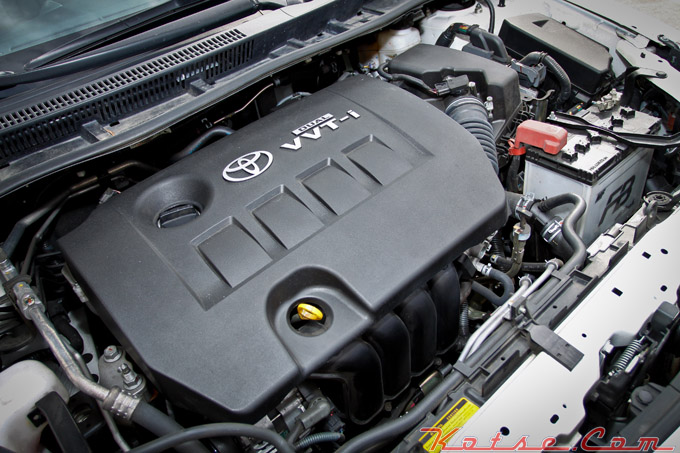1). What is a Dual VVTi and what is the difference between it and the normal VVTi?
The main difference between VVTi and Dual VVTi is that VVTi technology adjusts the timing of the intake valves only while Dual VVTi adjusts both intake and exhaust valves (double-acting). In both cases, the camshaft has two profiles for the intake valves: the economy profile (below 6,000rpm or thereabouts) and the performance profile (above 6,000rpm). When the VVTi “kicks in”, oil pressure is exerted on an actuator that shifts the camshaft slightly, engaging the “performance” setting.
With Dual VVTi, the same thing happens, the difference is that this time the exhaust valves too are involved, i.e the camshaft has two profiles each for both intake and exhaust. Dual VVTi also minimises the start/stop compression pressures by adjusting the overlap sequences between intake and exhaust valves, making the process almost imperceptible — you might have noticed in not-so-advanced cars that starting and stopping the engine involves a small “tremor”: this tremor is well-nigh eliminated in Dual VVTi engines, which explains why Lexus cars and high-end Toyotas are so smooth to operate.
The ability to simultaneously open both intake and exhaust valves also allows for maximum scavenging of intra-cylinder charge, allowing very high rpm operation and thus liberating tremendous amounts of power from the same engine that boasts impressive low-end torque.
2) Is it possible for a car with a dual VVTi, 1,800cc engine to perform at between 15-16km/litre of gasoline.
Yes. After all, the whole concept behind the variable valve timing procedure is to enhance fuel economy without the need to sacrifice cubic inches or engine output.
3) What are merits and the demerits of a dual VVTi engine over the normal VVTi?
Merits: as stated earlier, with Dual VVTi the engine is very smooth, and it is possible to eke out even more miles for every gallon of fuel used. Demerits: a more complex engine. It might not necessarily be more prone to failure, but simple jobs such as head removal and/or overhauls are made a little trickier and require a little more caution.
Did you love the story? You can also share YOUR story and get it published on Bizna Click here to get started.





very useful information, especially to vehicle owners with vvti & dual vvti engines.